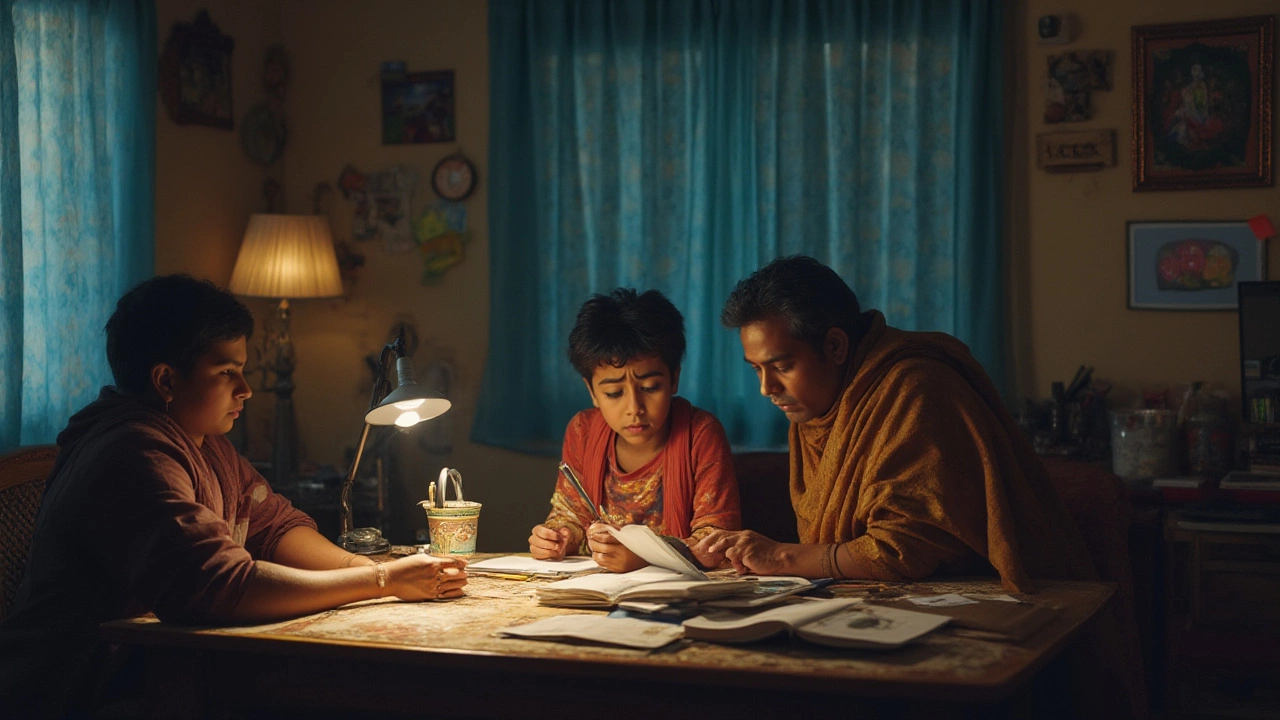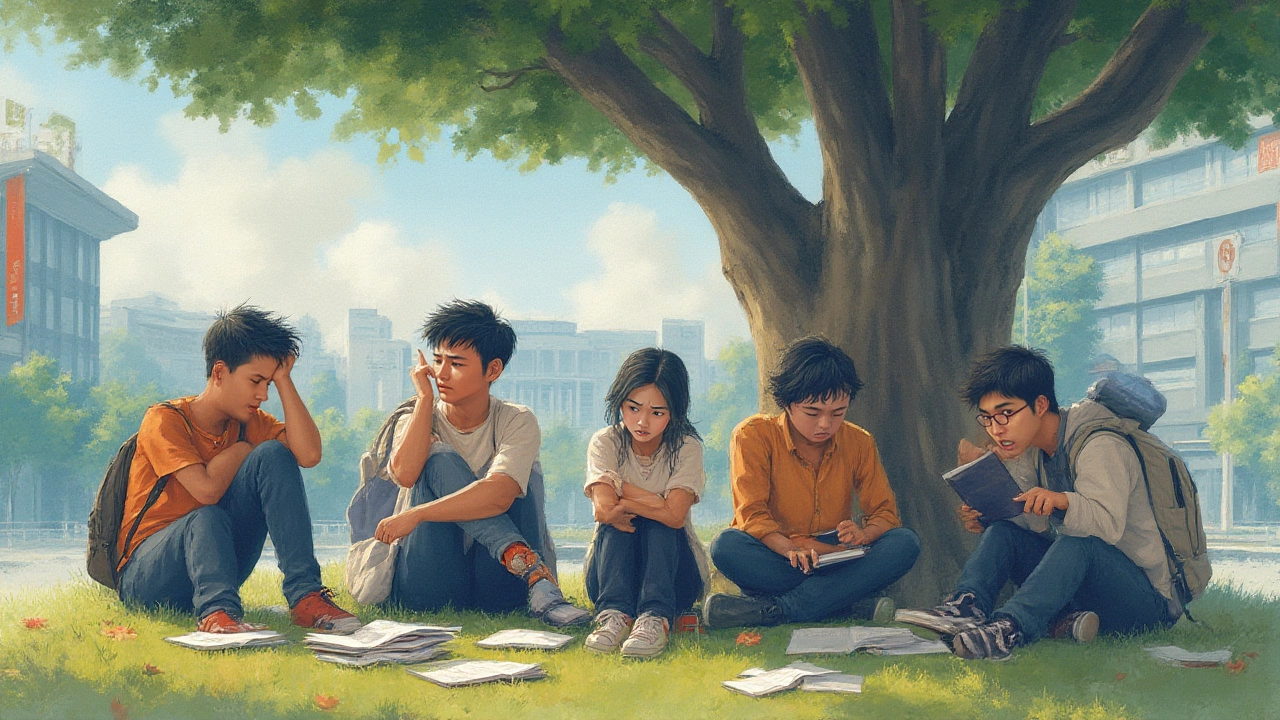Imagine spending over a decade preparing for just two intense days. One test, and your whole future hangs in the balance. That’s not a movie plot — for millions of students across the world, it’s real life. Some exams have the power to dictate your job, your status, even your happiness. Ask any student who’s faced China’s Gaokao or India’s JEE and you’ll see nerves, exhaustion, and sometimes tears — but there’s also pride for surviving something most adults can’t even imagine. Let’s peek behind the curtain and see what makes these exams so terrifying, why they matter so much, and what anyone can do when their own big test looms.
The Gaokao: China’s National Higher Education Entrance Examination
If you asked parents in China to name the number one source of high-school stress, they’d answer without blinking: the Gaokao. This test decides which university a student gets into — or if they go at all. It’s not a stretch to call it China’s most important exam. In 2024, over 13 million students sat for the Gaokao, making it the biggest academic event on the planet. Families routinely put life on hold for a year or more, giving up holidays, jobs, and even moving cities, all so their child can have the best shot.
The pressure starts early. Kids enter extra study classes as young as ten. By high school, daily lessons can stretch twelve hours. On exam days, local police redirect traffic so students aren't distracted, and even ambulances wait outside test centers just in case. What do students face? Hours of essays, math problems, and tricky science questions. Some essay topics go viral for their creativity (like, "Is reality more important than dreams?") but others stump even adults.
Here’s why Gaokao is brutal: It’s a "once-a-year" gatekeeper. You don’t pass? Wait another year. It doesn’t matter if you were the top student — if you freeze on the big day, your dream university is out of reach. Some parents give their kids pep talks every morning, others cook traditional “lucky” foods. All of this, for a shot at the top schools, which narrow down millions to just a few thousand seats.
| Country | Exam Name | Annual Participants | Average Daily Study Before Exam (Hours) | Length (Days) |
|---|---|---|---|---|
| China | Gaokao | 13 million | 10-12 | 2-3 |
| India | JEE Main | 1.5 million | 8-12 | 1 |
| South Korea | CSAT (Suneung) | 500,000 | 12+ | 1 |
The social pressure is intense. If you don’t get into a great university, society can be quite unforgiving. Some students even take “cram school” sleeping pills to maximize rest and alertness. Despite it all, many remember the Gaokao as the toughest, but most defining, moment of their lives. It may be harsh, but it’s not likely to change soon — parents fear their kids will miss chances if the system gets any easier.
If you’re facing a big test and need strategies, here’s what some Gaokao survivors recommend:
- Take realistic breaks: No one can learn 12 hours straight. Go for walks, listen to music, or dance with your dog (yes, seriously — it helps).
- Talk about your fears. Hide nothing. Sharing the worst "what if" scenarios helps you see they’re manageable.
- Don’t chase perfection. Enough is sometimes enough; you don’t need full marks to get into a good uni.
- Get decent sleep pre-exam. All-nighters are, frankly, pointless.
The sheer scale, single chance, and the way Gaokao shapes a family’s entire identity make it one of — if not the most stressful exam in the world. But it’s not alone.

India’s JEE, South Korea’s CSAT, and Other Infamous Stress Magnets
India’s Joint Entrance Exam (JEE) and South Korea’s CSAT (called Suneung) are just as nerve-racking as Gaokao — if not worse for those who take them. In India, admission to the nation’s elite engineering colleges (ITTs, NITs) depends almost entirely on JEE results. Each year more than 1.5 million students compete, but only a fraction make the cut: we're talking about a 0.6% acceptance rate at top IITs. The questions? Complex physics puzzles, math conundrums, and advanced logic you’d see in a postgrad classroom. Students study six days a week from age 14. Families sometimes move cities, rent rooms near "coaching factories" in Kota or Hyderabad, and even sell land just to fund extra lessons.
Think Gaokao’s tough on nerves? In India, exam day brings blackouts (no electricity, just in case), special trains, and a city-wide hush. If you thought the pressure was just academic, think again. Parents often treat JEE as a ticket out of poverty or as the only way to win respect. Students speak about fainting during exams or needing therapy for anxiety and burnout afterward. Yet every April, new hopefuls cram physics formulas and calculus, just for a shot.
Let’s hop across to South Korea. Their CSAT exam lasts 8 hours and covers Korean, English, math, sciences, and more. Shops open late, planes don’t fly during the listening test, and the whole city slows down. Why such drama? Because South Koreans believe Suneung shapes not just careers — but future marriages, jobs, and family status. Universities even postpone events, and government offices let parents take the day off to support their children.
Globally, a handful of other exams have the same "life-or-death" feeling — like the SAT in the US or the bar exam for lawyers everywhere. But none match the single-sitting, winner-take-all vibe of these East and South Asian titans. The anxiety, sleepless nights, and sky-high stakes turn these tests into something more than mere academic hurdles — they become a cultural milestone, a badge of survival.
Savvy students worldwide now swap tips on YouTube and Discord: “Record yourself teaching the hardest concept,” says one. “Try Pomodoro timers and herbal teas.” Others swear by simple tools: flashcards, color-coding notes, or forming tiny study groups. Mental health apps are gaining ground, too, with parents and teens both booking therapy or mindfulness sessions not just for results, but to stay sane through the process.
The latest data shows a direct connection between these stressful exams and spikes in youth anxiety. In 2024, a survey from Beijing’s Tsinghua University found that over 70% of Gaokao takers reported moderate to severe stress symptoms. Korean studies mirrored that data: over half of Suneung candidates said family pressure was their main worry.

Surviving Extreme Exam Pressure: What Actually Helps?
If there’s one thing these monster exams reveal, it’s that no one truly “gets used” to the pressure. The whole process can make you question your abilities, lose sleep, or at times want to quit. But students have found clever, real-life hacks to stay afloat.
First, it’s not about eliminating stress — that’s impossible when a test is woven into your future. Instead, aim to master your nerves. One proven trick? Visualization. Athletes have done this for years: imagine yourself walking into the room, breathing slow, opening the paper, and calmly solving that damn math problem. When things feel scary, I ask Riya, my daughter, to “picture surviving the worst part — and then going for ice cream after.” It sounds silly, but it breaks the spell of doom-thinking.
Another underrated tool is a strict routine. Not one that chains you to your desk, but one that gives your mind regular downtime. So, block real breaks. Bake banana bread, call a friend, or even binge a dumb TV show (our latest was old episodes of MasterChef Australia — pure joy!). Keeping a “worry journal” is a massive help: write down every little thing that scares you, then look at it an hour later. Nine out of ten worries seem smaller when you see them on paper.
If parents are reading this, remember that encouragement means more than lectures. Let your kid vent. Don’t try and fix every problem; just listen. Food and mood are connected, so swap out some junk for fruit, nuts, or one square of chocolate — comfort food counts, but balance is key.
For students juggling parents’ expectations, peer competition, and the mountain of textbooks, don’t compare yourself to that one genius who aces every test. Their journey isn’t yours. Celebrate small wins — got one hard question right today? That’s a victory. Find a “study buddy” to quiz you or check in; even a few encouraging texts can lighten the load.
On the big day, focus on deep breaths and positive self-talk. Take a packed lunch, and don’t forget a backup pen (because Murphy’s Law loves test-takers). Block out post-exam gossip — your answers are done, so let your brain unplug. The world’s most stressful exams — Gaokao, JEE, Suneung — might seem unbeatable, but with community, honesty, and practical coping tricks, students come through stronger every year. Because at the end of the day, these tests don’t just measure what you know; they show just how much grit you’ve got. Survive one, and nothing else feels quite as tough.
